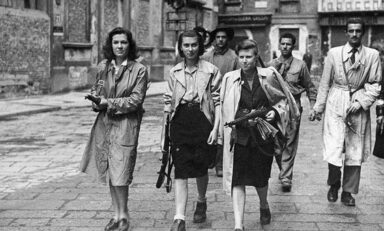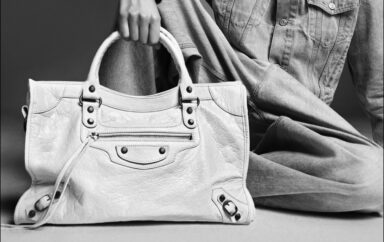I think I saw “athleisure” at work the first time onstage during the Lovesexy tour, in 1988 in Milan, where powerhouse ballerina Cat Glover gyrated and kicked like a banshee. She was this combination of muscularity, elegance and speed, all decked out in peach and black tiny spandex outfits printed with big words like “power” and “girl.” Something that 30 years later you can find in the lookbook for Ivy Park.
Cat was a marginal figure, but at the same time she was the embodiment of what Prince’s artistry stands for: Beauty, sex, adrenaline, empowerment, precision, elegance with a healthy dose of vulgarity. And it was truly post-racial, in a way that we didn’t understand at the time. The audience was suddenly united in a single response. Whether you were the music snob or the party animal, the sexually confused teenager or the church lady, there was something in there for you.
Prince had invented “The Universal,” something appealing to everybody. Prince was “everything” before the expression even existed. The tsunami of musicianship and visual ideas combusted in a formula so intoxicating because so accessible. Blacks thought he was black. Whites thought he was white. Gays thought he was gay, and straights thought he was straight.
There’s a lot of talk about popular culture today, and the way music has to be relevant to Millennials. Well, Prince was social media without the technology. He was his own TV channel, his own multi-brand boutique, his own music festival. He was the dancer, the rock musician, the controversial sex symbol, the religion freak, the mentor with the stable of ladies, Paisley Park and Batman, peach outfits and Versace campaigns, schmaltzy ballads and complicated jazz passages, Minneapolis and Paris.
A kaleidoscopic “brand” with a strong identity! You can listen to an obscure song he penned for some female singer who didn’t make it big, and know -in two seconds- that it’s Prince.
I’ve been following social media chatter in the hours after his death, and everybody has a story, and a song, different from the rest. That reminded me that it was possible, not long ago, to be excellent, innovative, and popular with the masses.
Today we are encouraged to maintain a voice “relevant to millennials” which very often means pandering. Keep it easy, stupid, or you’ll lose followers.
We hear so much encouragement about being “generalistic” and give people what they want. The result of that –like Buzzfeed proved two weeks ago when they gathered 800,000 viewers on their livestream– is that, when asked, people want to see watermelons constricted with rubberbands until they explode.
Prince gave us the heart and soul we didn’t know we wanted, but couldn’t live without after the first sip. I guess it’s called “enlightenment.”
Accessible didn’t use to mean sanitized, non-controversial, and short–because attention span is limited. Prince was both concise and symphonic, his tracks could be edited for radio play or could go on for 10 minutes. They’ve tried for years to put together a compilation of his best songs and it’s impossible. Do you choose the number ones or the songs that changed the way we perceive music? The songs that–like good art does–changed the world.
So, how does Prince relates to spandex pants? Oh… didn’t we agree he was everything?
Lapo Belmestieri is an Art Director and a pop culture snob. He lives in New York City.
Listen and watch David Gilmour playing a solo tribute to Prince included in Confortably Numb. This was performed on Sunday, April 24th 2016 for Teenage Cancer Trust at the Royal Albert Hall.



